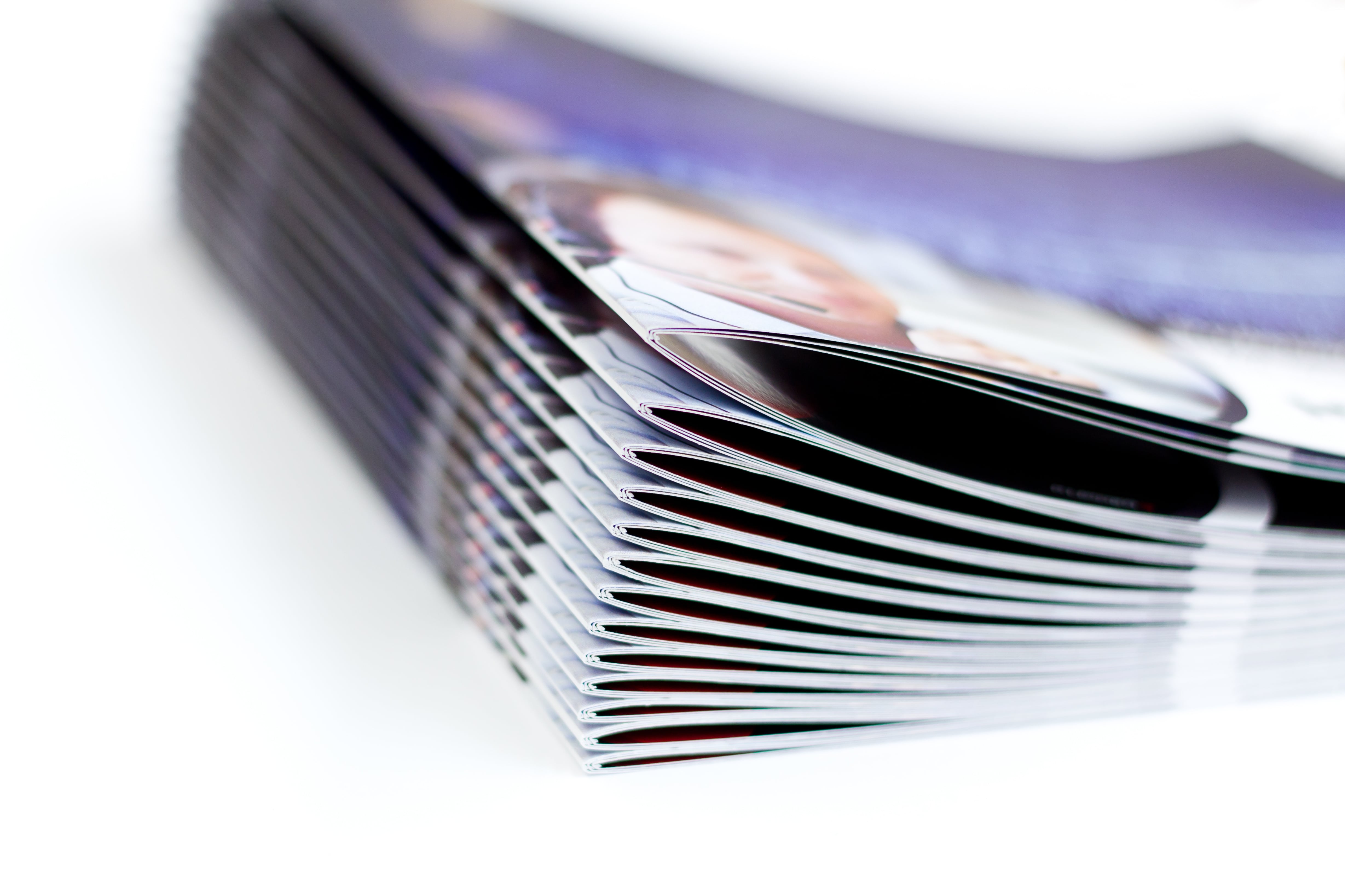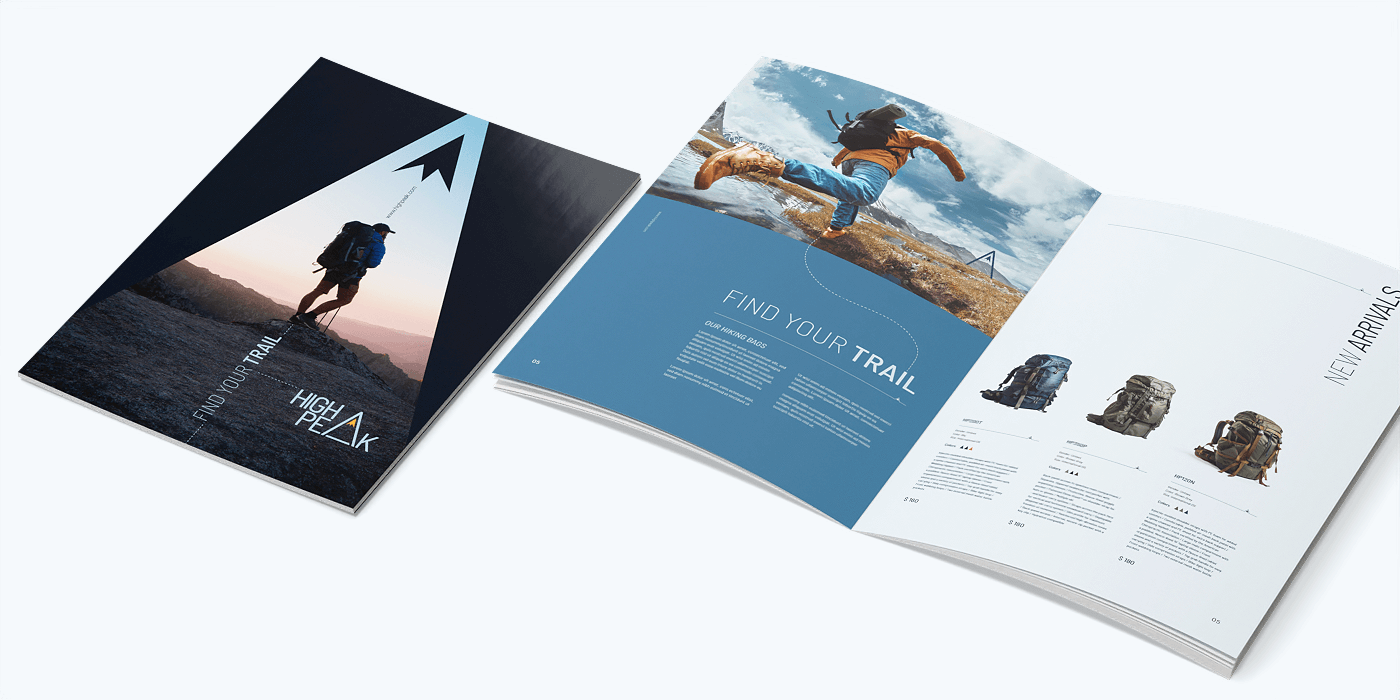How Eco-Conscious Brands Are Using Green Booklet Printing Methods
Wiki Article
The Vital Guide to Comprehending Brochure Printing Options and Techniques
The procedure of booklet printing entails several factors to consider that can considerably impact the final product. From choosing the proper format and size to comprehending the nuances of binding approaches, each option plays an essential function. In addition, factors such as paper stock and printing strategies further influence the efficiency of the booklet. As one navigates these options, it ends up being crucial to understand exactly how they adjoin and what that means for the overall result.Comprehending Brochure Dimensions and layouts
When considering pamphlet printing, recognizing the numerous formats and sizes readily available is crucial for attaining the desired discussion. Pamphlets can be generated in countless layouts, including saddle-stitched, spiral-bound, and perfect-bound, each offering distinctive advantages. Usual sizes vary from common letter (8.5 x 11 inches) to smaller choices like A5 (5.8 x 8.3 inches), enabling versatility based upon web content and target audience.Selecting the ideal dimension can affect both the layout and viewers engagement. Larger dimensions may suit visually driven material, while smaller sized styles might be much more mobile and straightforward. Additionally, the variety of pages affects the option of binding approach, as thicker booklets might require tougher bindings. Inevitably, recognizing these elements enables a much more customized technique, making certain that the final item lines up with the designated message and aesthetic, boosting the overall efficiency of the communication.Choosing the Right Paper Supply

Binding Approaches: Factors To Consider and choices
When it pertains to binding approaches for booklets, numerous alternatives are offered, each with distinctive advantages. Saddle stitch binding supplies an economical service for thinner booklets, while excellent binding methods offer a more sleek seek thicker magazines. Wire-O binding attracts attention for its longevity and simplicity of use, making it optimal for records that need flexibility.Saddle Stitch Binding
Saddle stitch binding uses a functional and cost-effective solution for setting up booklets, making it a popular choice amongst companies and publishers. This binding approach includes folding sheets of paper in half and stapling them along the fold line, producing a organized and cool appearance. Generally suitable for brochures with a lower web page count, saddle sewing is excellent for publications, brochures, and training materials. The simpleness of this method permits for quick manufacturing and is usually preferred for promotional things or short runs. It is necessary to note that saddle stitch binding might not be ideal for thicker pamphlets, as the back might not hold up under raised weight. Generally, it remains a reputable alternative for many printing projects.Perfect Binding Methods
Perfect binding is an extensively used technique that provides a expert and refined coating to brochures and magazines. This technique entails gluing the pages together at the spine making use of a strong adhesive, enabling for a tidy side and the ability to hold a bigger variety of web pages contrasted to saddle sewing. Perfect binding is specifically appropriate for thicker pamphlets, such as brochures and annual reports, where a tough, level spine is wanted. Furthermore, it supplies the option for a printed cover that can be designed to enhance visual charm. Factors to consider such as web page matter, paper weight, and the planned usage of the brochure need to be taken right into account, as they can influence toughness and overall high quality.Wire-O Binding Options
Wire-O binding, understood for its resilience and versatility, supplies a superb choice for brochures that require easy page turning and a professional look. This binding approach uses a collection of steel loops that hold web pages safely, permitting them to lie level when open. It is specifically ideal for directories, presentations, and manuals because of its durable nature. Wire-O binding is offered in numerous colors and sizes, accommodating various web page counts and densities. Furthermore, it allows the incorporation of covers and tabs, boosting the brochure's general aesthetic. Considerations for Wire-O binding consist of the choice of wire shade, the size of the loops, and the extent of customization wanted, every one of which can exceptionally affect the end product's look and capability.Digital vs. Offset Printing: Which Is Best for You?
When selecting a printing method for booklets, recognizing the differences in between digital and counter printing is crucial. Digital printing uses modern technology to create high-quality prints rapidly and economically, making it optimal for brief runs or projects needing fast turn-around times. It permits modification, providing the capability to print on-demand with marginal waste.In contrast, balance out printing is a conventional approach that masters generating big amounts with regular quality. It involves moving ink from a plate to a rubber covering, after that to the paper, which leads to lively colors and accurate details. Nonetheless, counter printing commonly calls for longer arrangement times and is extra affordable for bigger volumes.Ultimately, the option in between electronic and balance out printing depends upon job requirements, spending plan, and preferred quantity. For tiny, time-sensitive tasks, digital could be the most effective option, while balanced out might be more suitable for larger, high-quality productions.
Creating Your Pamphlet: Tips and Best Practices
When designing a pamphlet, mindful focus to layout, typeface choice, and shade usage can substantially enhance read the full info here its efficiency. A well-structured design overviews the visitor's eye, while appropriate fonts ensure readability and share the desired tone. In addition, reliable use color can stimulate feelings and emphasize essential details, making the total design a lot more impactful.Selecting the Right Format
Just how can one properly select the best layout for a booklet? Initially, it is important to review the pamphlet's objective and target market. A clean, organized format boosts readability and involvement. Making use of a grid system can aid in straightening aspects continually, producing an expert appearance. Furthermore, incorporating visual hierarchy via differing sizes and placements of images and text can assist the reader's eye and highlight crucial details. It is likewise crucial to leave enough white room, which prevents congestion and permits far better emphasis. Finally, checking different formats with mock-ups can supply understanding into exactly how the layout does in real-world situations, making certain that the final product fulfills both useful and aesthetic demands.Selecting Ideal Typefaces
An appropriate typeface can greatly enhance the overall design of a booklet, matching the layout and reinforcing the content's message. The option of typefaces need to take into consideration readability, specifically for body message, as it assures the details is obtainable to all visitors. Sans-serif typefaces are usually preferred for digital layouts, while serif font styles can provide a conventional feel in printed materials. It's a good idea to restrict font selections to two or three to preserve visual comprehensibility. In addition, typeface dimension plays a vital role; headings should be not overwhelming but distinctive, while body text need to fit for reading. When selecting font styles, alignment with the pamphlet's theme and target audience is necessary for effective communication and visual appeal.Efficient Use Shade
Shade functions as a powerful tool in brochure layout, guiding and shaping perceptions visitor feelings. It can evoke feelings of calmness, trust fund, or excitement, depending on the shades selected. Developers ought to think about color theory principles, ensuring that the chosen combination straightens with the brochure's message and target audience. Using warm shades like red and orange can develop seriousness, while cooler tones like blue and environment-friendly foster tranquility.Additionally, contrast plays a vital role; corresponding shades can improve readability and aesthetic appeal. Consistency in shade use throughout pages additionally strengthens brand identity and communication. Eventually, reliable color implementation not just records attention yet additionally enhances the brochure's function, making it a crucial element of effective layout.
Ending Up Touches: Coatings and Unique Effects
While lots of think about the web content and layout of a booklet the most critical aspects, the ending up touches, such as coverings and special effects, play an essential role in enhancing its general appeal. Coatings can provide security and longevity, ensuring that the pop over here pamphlet stands up to damage. Matte surfaces use an innovative, non-reflective surface area, while shiny layers can make colors appear more lively and captivating. Unique impacts, like embossing or foil marking, include a tactile dimension that can create an unforgettable view impression. These techniques can highlight particular areas, accentuating vital information or producing aesthetic interest. Furthermore, UV finishing can offer a high-shine coating that boosts the total look.Together, these completing touches not only boost the booklet's visual but also connect expertise and interest to information, inevitably leaving a long-term effect on the visitor.Cost Factors To Consider for Booklet Printing
Understanding the various cost considerations for booklet printing is important for organizations and organizations aiming to maximize their budgets. Secret factors influencing expenses include the option of ink, binding, and paper techniques. Higher quality materials, such as premium paper or specialized inks, commonly increase the total expense. Furthermore, the size and page matter of the booklet play a significant role; larger pamphlets need even more resources and time to produce.Another crucial factor to consider is the printing strategy, whether electronic or balanced out, as each has its own pricing structure and suitability for various amounts. Businesses must likewise consider layout expenses, which can differ based upon intricacy and making use of professional solutions. Eventually, shipping and handling charges can contribute to the total amount, particularly for big orders. By assessing these elements, companies can make educated choices that straighten with their economic capacities while achieving the wanted top quality in their printed materials.Often Asked Questions
What Are the Ecological Impacts of Brochure Printing?
The ecological impacts of brochure printing include logging from paper production, carbon discharges from transportation, and waste generation from disposed of products - Booklet Printing. Lasting methods, such as utilizing recycled paper and green inks, can reduce these effectsJust How Can I Guarantee Color Precision in My Booklet?
To ensure shade accuracy in a brochure, one should utilize calibrated screens, utilize expert shade profiles, conduct examination prints, and pick premium printing services that use color matching and proofing options for ideal outcomes.What Is the Typical Turn-around Time for Brochure Printing?
The regular turnaround time for booklet printing varies depending upon the intricacy and amount - Booklet Printing. Normally, it ranges from a few days to 2 weeks, influenced by factors such as printing approaches and ending up demandsExist Minimum Order Quantities for Brochure Printing?

Can I Print Brochures in Multiple Languages?
Printing brochures in several languages is feasible. Many printing solutions use alternatives for multilingual or multilingual formats, enabling efficient communication. Cautious preparation guarantees that design elements suit various languages without endangering readability or looks. In addition, variables such as paper stock and printing methods more influence the efficiency of the pamphlet. When thinking about pamphlet printing, recognizing the various styles and sizes offered is necessary for achieving the wanted presentation. When choosing a printing method for booklets, comprehending the differences in between digital and balance out printing is necessary. Furthermore, the size and page count of the pamphlet play a considerable duty; bigger brochures call for more sources and time to produce.Another vital factor to consider is the printing strategy, whether digital or offset, as each has its very own pricing framework and suitability for various amounts. The environmental influences of pamphlet printing include logging from paper manufacturing, carbon discharges from transportation, and waste generation from disposed of products.Report this wiki page